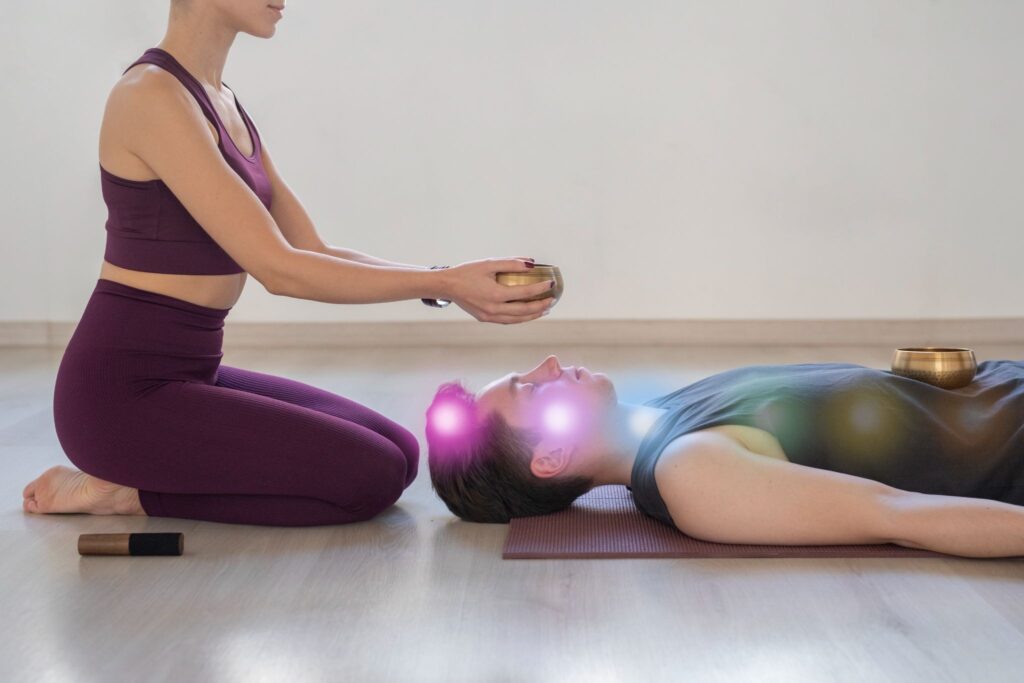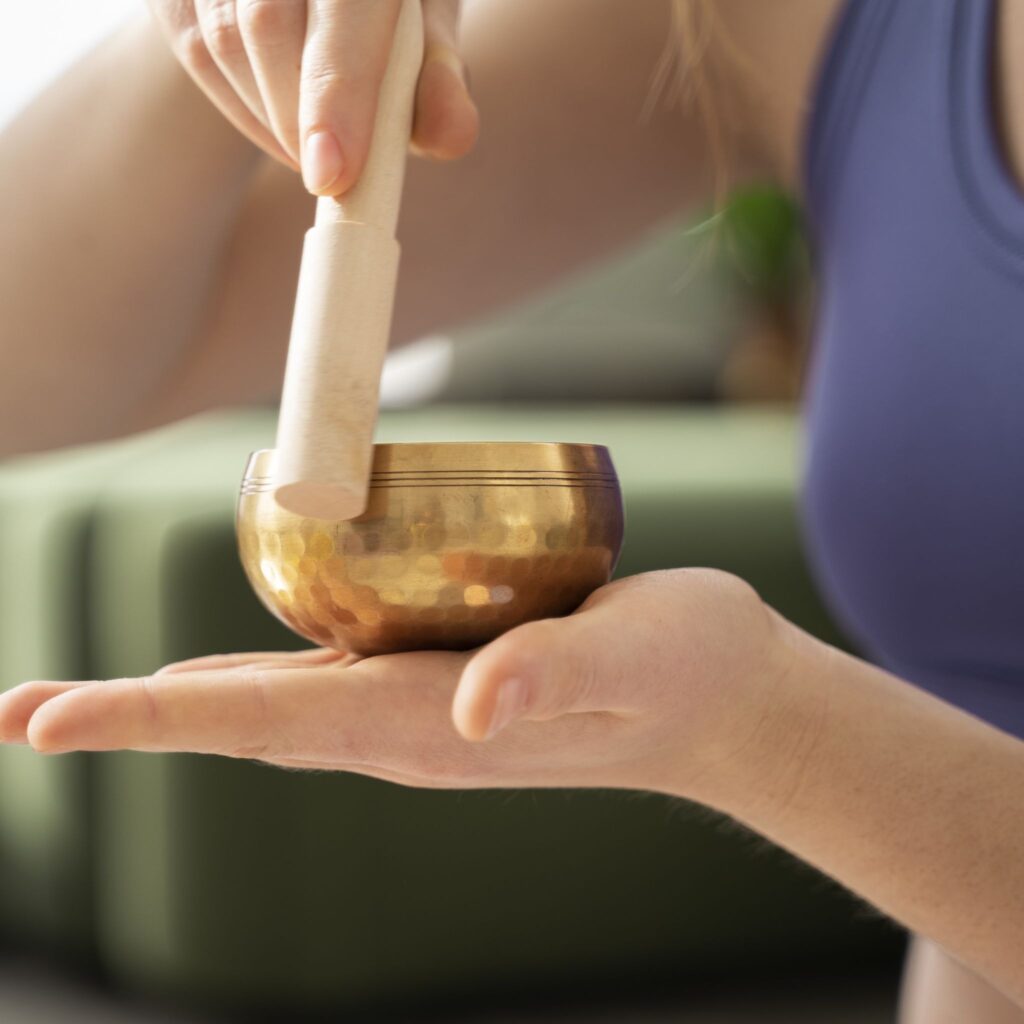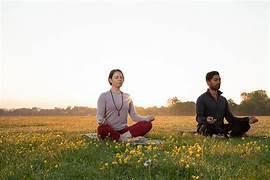
Choosing a wellness certification can feel overwhelming, especially when both Sound Healing and Yoga Nidra offer powerful benefits and rapidly growing career opportunities. Each modality supports deep relaxation and emotional balance, yet they differ significantly in approach, training style, and the type of experience they create for clients.
Understanding Sound Healing

Sound Healing Course is a vibrational therapy that uses instruments such as Tibetan singing bowls, crystal bowls, tuning forks, gongs, and chimes to influence the body and mind through frequency and resonance. Practitioners create soundscapes designed to calm the nervous system, balance energy, and promote mental stillness.
What Research Shows
Scientific interest in vibrational therapies continues to grow.
A study published in the Journal of Evidence-Based Complementary & Alternative Medicine (2016) found that singing bowl sessions noticeably reduced tension, fatigue, and anxiety. Research on sound frequency also suggests that resonance can support parasympathetic activation, the state associated with rest and recovery.
What You Learn in a Sound Healing Certification
- How sound frequency affects the brain and nervous system
- Techniques for playing bowls, chimes, gongs, and tuning forks
- How to guide group sound baths and private sessions
- Basic energetic anatomy
- Trauma-informed facilitation and grounding techniques
Who Sound Healing Is Best Suited For
This path suits individuals who enjoy working with sensory experiences, feel connected to sound as a healing force, or want to facilitate immersive sessions in studios, retreats, wellness centers, and therapeutic spaces.
Understanding Yoga Nidra

Yoga Nidra, often described as “yogic sleep,” is a guided meditation practice that leads practitioners into a deeply relaxed, dreamlike state between wakefulness and sleep. Unlike traditional meditation, Yoga Nidra uses structured guidance that moves awareness through breath, body, intention, visualization, and rest.
What Research Shows
A 2022 review in Frontiers in Psychology reported that Yoga Nidra significantly improves sleep quality and stress recovery. Other studies show that practitioners move into alpha and theta brainwave states linked with emotional healing, memory processing, and nervous system repair. Clinical research also highlights Yoga Nidra’s benefits for individuals experiencing anxiety, PTSD, and chronic pain.
What You Learn in a Yoga Nidra Certification
- How to structure and deliver Yoga Nidra scripts
- Breathwork and body scan techniques
- Understanding brainwave states
- Intention-setting (Sankalpa) and guided imagery
- Trauma-sensitive language and pacing
Who Yoga Nidra Is Best Suited For
This path is ideal for those who enjoy guiding others with their voice, love meditation or mindfulness practices, or want a modality that is accessible to people of all ages and physical abilities.
You can also read about how yoga nidra is perfect for sleep.
Sound Healing vs. Yoga Nidra Comparison
Session Style
Sound Healing creates an immersive auditory experience using instruments.
Yoga Nidra leads practitioners through inner awareness using verbal guidance.
Scientific Foundation
Sound Healing is grounded in vibrational frequency and resonance research.
Yoga Nidra is supported by studies on brainwave states and neuroplasticity.
Tools Required
Sound Healing requires instruments.
Yoga Nidra requires only your voice and well-developed scripts.
Teaching Style
Sound Healing suits hands-on, sensory-oriented facilitators.
Yoga Nidra suits calm, reflective teachers who enjoy guided meditation.
Client Experience
Sound Healing feels like a soothing bath of vibration and sound.
Yoga Nidra feels like a deeply restorative inner journey.
Career Opportunities
Both modalities integrate well into best yoga schools, wellness studios, retreat centers, corporate wellness programs, and private coaching. Training programs, including those offered at schools such as Oceanic Yoga, often combine these practices because they complement each other beautifully.
Graduates commonly lead:
- Group classes
- Private therapy-style sessions (non-clinical)
- Retreats and workshops
- Corporate wellness programs
- Online meditation or sound bath session
How to Decide Which Certification Fits You

Your Strengths
If you are creative, musical, or drawn to energy work, Sound Healing may feel natural.
If you communicate well, enjoy guiding others, or love meditation, Yoga Nidra may feel more aligned.
Your Ideal Clients
Sound Healing attracts groups seeking sensory relaxation and stress relief.
Yoga Nidra draws students needing deep rest, mental clarity, or nervous system healing.
Investment
Sound Healing involves purchasing instruments.
Yoga Nidra requires almost no physical equipment.
Your Long-term Goals
If you see yourself leading retreats or sound baths, choose Sound Healing.
If you want to support emotional wellness, sleep, or meditation practices, choose Yoga Nidra.
Can You Train in Both?
Yes, and many practitioners eventually do. Combining Sound Healing with Yoga Nidra offers a complete approach to rest, restoration, and mind–body healing. The two practices enhance each other: vibration softens the body and mind, while guided meditation deepens the internal journey.
Final Thoughts
Sound Healing and Yoga Nidra are both powerful, respected, and research-supported wellness practices. The right certification depends on your personal style, your connection to each modality, and the kind of experience you want to offer others. Schools such as Oceanic Yoga include these training sessions as part of their broader wellness programs, but the choice ultimately comes down to your passions and strengths.
Whichever path you choose, both offer meaningful, heart-centered ways to support healing and transformation.
FAQs
1. What is Sound Healing and how does it work?
Sound Healing uses vibrational therapy with instruments like Tibetan singing bowls, crystal bowls, and gongs to influence the body and mind through frequency and resonance. These soundscapes help calm the nervous system, balance energy, and promote mental stillness, supporting emotional well-being and relaxation.
2. What is Yoga Nidra and what benefits does it offer?
Yoga Nidra, often referred to as “yogic sleep,” is a guided meditation practice that induces deep relaxation between wakefulness and sleep. It has proven benefits in improving sleep quality, reducing stress, and aiding in emotional healing, particularly for anxiety, PTSD, and chronic pain.
3. How do Sound Healing and Yoga Nidra differ in practice?
Sound Healing creates an immersive auditory experience using instruments to affect the body and mind, while Yoga Nidra uses guided verbal instructions to lead practitioners into a deeply relaxed state, focusing on breath, body awareness, and visualization for emotional and physical healing.
4. Which certification should I choose: Sound Healing or Yoga Nidra?
Your choice depends on your personal strengths and career goals. If you enjoy working with sensory experiences and musical instruments, Sound Healing may be more suitable. If you prefer guiding others through meditation and breathwork, Yoga Nidra could be a better fit. Both certifications support deep relaxation and emotional balance.
5. What tools or equipment are needed for Sound Healing and Yoga Nidra?
Sound Healing requires various instruments, such as singing bowls, gongs, and tuning forks. In contrast, Yoga Nidra only requires your voice and well-structured scripts to guide practitioners into a state of deep relaxation.
6. Can I pursue both Sound Healing and Yoga Nidra certifications?
Yes, many practitioners choose to train in both modalities. Combining Sound Healing with Yoga Nidra offers a comprehensive approach to healing, as sound enhances the body’s relaxation and Yoga Nidra deepens the mind’s restorative journey.





